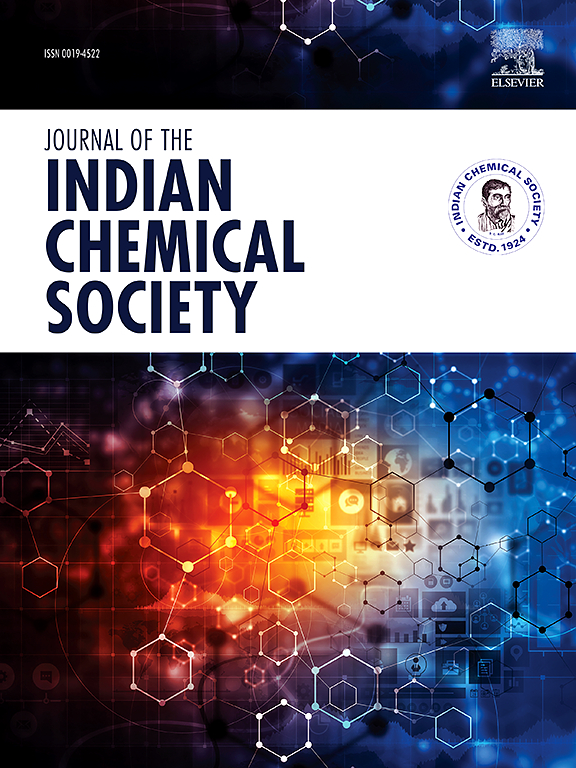Production and characterization of ora-pro-nóbis and agar-agar based edible leathers (Snack-films): a new plant-based food option
IF 3.2
4区 化学
Q2 CHEMISTRY, MULTIDISCIPLINARY
引用次数: 0
Abstract
The present study aimed to produce and characterize edible leathers based on ora-pro-nóbis leaf puree (OLP), with concentrations ranging from 30 to 60 g/100 g of ELFM (edible leather forming mass) and agar-agar (3 g/100 g ELFM), using the tape casting technique. The edible leathers were dried in an oven and evaluated for their physicochemical parameters (Aw, moisture, pH, protein content, and hygroscopicity), optical properties (color and browning index), structural characteristics (thickness and SEM), mechanical properties, and spectroscopic profile (NMR). Regardless of the OLP concentration used, it was possible to form leathers from ora-pro-nóbis leaves and agar-agar. Color characteristics were not significantly affected in terms of lightness (L) and chroma a. However, significant differences were observed for chroma b∗ and C∗. The physicochemical stability of the leathers was confirmed by their low water activity (<0.8) and moisture content (<7.8 %). Increasing OLP levels resulted in higher protein content (6.8–8.9 g/100 g w.b.) and thickness (0.3–0.5 mm), which positively impacted puncture resistance and indicated a more cohesive structure. SEM analysis revealed heterogeneous surfaces and internal structures, with discontinuity zones attributed to compounds in the OLP. NMR results confirmed the presence of hemicellulose, lignin, cellulose, and amino acids, reinforcing the nutritional value of the leathers. Additionally, total phenolic content (680–830 mg GAE/g edible leathers) and ABTS•+ (1.272–1.499 μmol Trolox eq./100 g edible leathers) increased with higher OLP content, demonstrating the product’s functional potential. The incorporation of ora-pro-nóbis puree into edible leather formulations contributed to improvements in the nutritional, functional, and structural aspects of the final product. Thus, the developed edible leathers are a promising alternative for using non-conventional vegetables, contributing to innovation in functional and sustainable food products.

ora-pro-nóbis和琼脂基可食用皮革(零食薄膜)的生产和表征:一种新的植物性食品选择
本研究旨在利用胶带铸造技术,以ora-pro-nóbis叶泥(OLP)为基础,生产和表征可食用皮革,其浓度为30至60克/100克ELFM(可食用皮革成型质量)和琼脂(3克/100克ELFM)。在烘箱中干燥可食用皮革,并评估其理化参数(Aw、水分、pH、蛋白质含量和吸湿性)、光学特性(颜色和褐变指数)、结构特性(厚度和扫描电镜)、机械性能和光谱特征(核磁共振)。无论使用的OLP浓度如何,都有可能从ora-pro-nóbis叶子和琼脂中形成皮革。在亮度(L)和色度a方面,颜色特征没有显著影响。然而,色度b∗和C∗观察到显著差异。低水活度(<0.8)和低含水率(< 7.8%)证实了皮革的物理化学稳定性。OLP水平的增加导致蛋白质含量(6.8-8.9 g/100 g w.b)和厚度(0.3-0.5 mm)的增加,这对抗穿刺性有积极影响,表明结构更有凝聚力。扫描电镜分析显示了非均匀的表面和内部结构,有不连续区归因于OLP中的化合物。核磁共振结果证实了半纤维素、木质素、纤维素和氨基酸的存在,增强了皮革的营养价值。此外,随着OLP含量的增加,总酚含量(680 ~ 830 mg GAE/g食用皮革)和ABTS•+含量(1.272 ~ 1.499 μmol Trolox = /100 g食用皮革)也随之增加,显示出产品的功能潜力。将ora-pro-nóbis果泥加入可食用皮革配方有助于改善最终产品的营养、功能和结构方面。因此,开发的可食用皮革是使用非常规蔬菜的有前途的替代品,有助于功能性和可持续食品的创新。
本文章由计算机程序翻译,如有差异,请以英文原文为准。
求助全文
约1分钟内获得全文
求助全文
来源期刊
CiteScore
3.50
自引率
7.70%
发文量
492
审稿时长
3-8 weeks
期刊介绍:
The Journal of the Indian Chemical Society publishes original, fundamental, theorical, experimental research work of highest quality in all areas of chemistry, biochemistry, medicinal chemistry, electrochemistry, agrochemistry, chemical engineering and technology, food chemistry, environmental chemistry, etc.

 求助内容:
求助内容: 应助结果提醒方式:
应助结果提醒方式:


